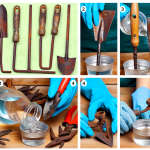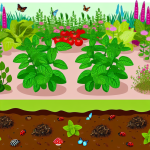The Ecological Benefits of a Garden Pond
A garden pond can transform your outdoor space into a thriving ecosystem. Introducing a water feature benefits not only the aesthetics of your garden but also the health of your plants. Here are some key advantages of having a garden pond:
- Enhanced Soil Moisture: A pond helps to maintain a more consistent moisture level in your garden soil, benefiting moisture-loving plants and reducing the need for frequent watering.
- Wildlife Attraction: Ponds attract beneficial wildlife such as frogs, dragonflies, and birds that help keep pest populations under control.
- Microclimate Modulation: The water body helps to moderate the temperature and humidity levels surrounding your plants, creating a more stable growing environment.
- Nutrient Recycling: Decaying plant matter and aquatic life in the pond contribute to the nutrient cycle, providing a natural source of fertilizer for your garden.
Steps to Create a Garden Pond
Creating a garden pond doesn’t have to be daunting. Follow these steps to ensure your pond supports both the aesthetics and health of your garden:
Step 1: Choose the Right Location
- Sunlight: Select a spot that receives partial sunlight, ideally 4-6 hours a day. This helps to support aquatic plant life without promoting excessive algae growth.
- Proximity to Trees: Avoid placing the pond too close to deciduous trees to minimize debris like fallen leaves, which can pollute the water.
- Accessibility: Ensure easy access for maintenance and for your enjoyment.
Step 2: Design and Dig
- Pond Shape: Plan a shape that complements your garden layout. An irregular, natural shape often looks more appealing and fits better with organic landscapes.
- Depth: Your pond should be at least 2 feet deep for fish to thrive and to prevent the water from freezing solid in winter.
- Excavate: Begin digging, creating a series of shelves at different depths to accommodate various plants.
- Level the Edges: Ensure the pond’s edge is level to avoid uneven water levels.
Step 3: Install the Liner
- Underlayment: Place a layer of sand or old carpeting to protect the pond liner from sharp objects that might puncture it.
- Flexible Liner: Use a high-quality EPDM or PVC liner, allowing some extra material around the edges to secure it properly.
- Smooth Out: Smooth out wrinkles as you install the liner, especially on the shelves.
Step 4: Fill and Plant
- Water Fill: Slowly fill the pond with water, smoothing the liner as it fills.
- Edge Finish: Use stones or other natural materials to hide the liner’s edge and secure it in place.
- Aquatic Plants: Introduce plants like water lilies, iris, and submerged oxygenators to keep the water clean and oxygenated.
- Marginal Plants: Add plants like creeping jenny or marsh marigold around the pond edge to soften transitions and provide a lush border.
Step 5: Introduce Wildlife
- Fish: If you plan to add fish like goldfish or koi, ensure the pond has cycled for a week or two to establish a balanced ecosystem.
- Beneficial Insects: Encourage dragonflies and other beneficial insects by maintaining a variety of plant heights and types.
- Amphibians: Provide some shallow areas or ramps for frogs and toads to easily enter and exit the pond.
Maintenance Tips
- Regular Cleaning: Remove debris like fallen leaves and dead plants regularly to keep the water clear and prevent nutrient build-up.
- Pump and Filter: Install a pond pump and filter to keep water circulating, which helps prevent algae blooms and keeps the water oxygenated.
- Monitor Water Levels: Check and top off water levels during hot weather to compensate for evaporation.
- Winter Care: In colder climates, install a pond heater or aerator to ensure a portion of the surface remains ice-free, allowing for gas exchange.




GIPHY App Key not set. Please check settings